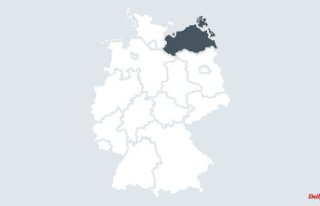The RS2 and the RS4 were the prelude: After Audi had warmed up with the sporty small series, the Ingolstadt-based company turned a full-fledged station wagon into a sports car for the first time 20 years ago with the RS6 Avant.
When Stephan Reil thinks back to his time as Head of Development at Quattro GmbH, Audi's former factory tuner subsidiary, the RS6 plays a very special role. "It was the right car at the right time." Because apart from the R8 as the first and so far only independent super sports car from Audi's former factory tuner subsidiary, no other car was as unusual and surprising for him as the first large station wagon with a lot of power, which came onto the market in summer 2002.
Audi had already built two extremely sporty station wagons for the RS2, which was built in small series at Porsche, and its successor, the RS4, Heil remembers. But they were all based on the Audi 80 or the A4 in the lower middle class.
The result of their work is an experience that has lost none of its fascination to this day: Even as a youngtimer, the first RS6 from the A6 generation known internally as the C5 is still wide and provocative and its 4.2-liter V8 engine growls with it a self-confidence based on 331 kW/450 hp. That is 81 kW/110 hp more than in the series and just as much as in the TT-R, with which Laurent Aïello won the DTM in the same year.
The then typical red instrument lighting flickers on, the analogue needles twitch over the scales and the RS6 greedily paws its hooves. Automatic on D, foot on the gas - and before the navigation has built its pixelated map on the barely palm-sized screen, the Elder Sportsman shoots towards the horizon. The Audi owes its sprint value of 4.7 seconds to its maximum 560 Nm and its obligatory all-wheel drive.
Although it is different from all Avants before it, the success of the RS6 is not lacking. This is easy to measure in numbers. Instead of the originally planned 999 copies, the Bavarians built a proud 8000 RS6 Avant over the short term until 2004, says Reil. At a price that was just under 90,000 euros to begin with, it's probably not a bad deal.
No wonder that the express transporter was not a flash in the pan and that Quattro GmbH went one step further in the next generation. Because the basic model was already a V10 back then, the S6 was fitted with a twin turbo, which Reil still doesn't quite know how it was housed in the engine compartment. But the effort was worth it: 5.0 liters of displacement make the ten-cylinder V10 the largest RS engine of all time and its 426 kW/580 hp even surpassed the performance of the R8 at the time.
Because things couldn't always go on like this, Reil and his colleagues changed the strategy for the successor to "less is more" two years and 4,000 cars later. Now a V8 has to suffice again, which at 412 kW/560 hp is also weaker than its predecessor.
"But it was also a few hundredweight lighter," argues Reil and pulls out the sheet with the driving performance: It doesn't matter whether it's acceleration or top speed - the new one was significantly better in every discipline - and 30 percent more economical on top of that. Although initially heavily criticized, the RS6 number three became a bestseller in a generational comparison and was built for a full five years.
When the new A6 came in 2018, Quattro GmbH didn't wait long and added the fourth and youngest RS6 to date in 2019. It even sheds all restraint when it comes to design, affords more width and presence than ever and comes with a new evolutionary stage of the V8 engine. From a displacement of four liters, the basic model already gets 441 kW/600 hp, and the RS6 plus hasn't even been presented yet. However, the price has now reached previously unimagined heights and starts at around 165,000 euros.
With four generations now and a total of over 20,000 sales, even in countries with little station wagon affinity such as the USA, the RS6 Avant is not only an important pillar in the portfolio of Quattro GmbH, which has since been renamed Audi Sport. But it has also left its mark on an entire segment, says classic car expert Frank Wilke from Classic Analytics: "While the BMW M5 had always been considered the business express par excellence, frequent drivers in a hurry and representatives suddenly had the choice between the sedan with a kidney and the station wagon with rings."
The signs are now also pointing to electrification at Audi Sport, so that the current RS6 Avant will probably be the last of its kind. But you definitely want to stick to the concept, promises sports director Sebastian Grams - and in the future it may even be double-tracked.
Because while Audi is once again developing a new A6 for the old world, which could become a green RS6 with a particularly powerful hybrid drive, the Bavarians are also building an electric A6 for the new world on their so-called PPE platform and also have it already promised a station wagon. Wouldn't it be laughable if an RS model could not also be derived from this.












